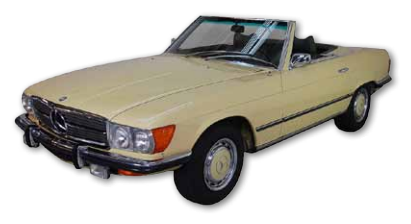By Lloyd Graff
Today’s Machining World Archives January/February 2011 Volume 7 Issue 1

The key question facing American manufacturers, especially contract machining shops in the next two years is, how do you expand? Or, the interesting corollary question, is this the time to cash in?
Let’s be real, American manufacturing has always been cyclical and still is. We are a little past a year into the current upturn. With low interest rates, the 2012 presidential election run-up beginning, the depletion of domestic players and the competitiveness of North American industry, these should be two excellent years.
There is always a strong tendency to fight the last war, so a lot of folks are going to be reluctant to expand for fear of the next bubble burst, a la 2001 and 2008. The dilemma so many of us are faced with is that we cut back so deeply to weather the recession that it is hard both financially and psychologically to put it all on the line again. But some people will make the big bets and a portion of that group will win big.
This is the moment to ask yourself which camp you are in. Visibility of the future is always iffy, but I think the odds are strong that we have at least two fat years ahead. If you consider yourself a player who is in the game for the long term this is the time to plunge. If you can’t take the volatility of the manufacturing game, sell out in 12 to 18 months.
The train from Beijing to Shanghai goes 200 miles per hour. Amtrak’s Acela Express train from Washington D.C. to New York goes half that on a good day. But our erstwhile stimulus package of 2009 has a lot of money designated to make us slightly better than mediocre in rail.
They are upgrading the service between Chicago and St. Louis, Los Angeles and San Francisco, Miami to Orlando and Tampa, and that hot rail market between Albuquerque and Santa Fe, New Mexico.
Train travel is fun. Security is not as annoying as at airports and fares are pretty reasonable. My question is whether we can afford the cost of upgrading a third rate passenger rail system to a second rate one. Our interstate highway system is excellent and air transportation is still high caliber, so do we need to spend billions on passenger rail?
Anyone for buses?
Mike Jackson, the CEO of AutoNation, the big publicly held consortium of car dealers, says pickup trucks are flying out of his stores. He sees this activity as a reflection of the confidence of small business around the U.S.
Jackson is predicting a two or three year ramp-up to the 16 million car build rate, which has traditionally been the standard of automotive well-being. With GM and Ford solidly in the black at 11.5 million units they will be coining money at 16. My question is whether the auto infrastructure can quickly accommodate 16 million. From a precision machining standpoint we are beginning to push the comfortable limits of production now in place. A 40 to 50 percent increase in build rate will strain everybody to meet requirements.

I talked to Kevin Meehan of Hydromat recently about the ability of his clients to expand production. He’s seeing some activity, but he thinks the big Tier Ones in Europe, particularly those in Germany, will be in the catbird seat to provide the sophisticated assemblies that will be in short supply. The Germans maintained their automotive infrastructure, while in North America we allowed the market to gut part of the supply chain.
The opportunity to get fat and happy during the impending U.S. car up tick may be more a bonanza for the Germans than for companies in the New World.
There are at least three cable series currently chronicling the business life of pawn shops. What is then fascination with people borrowing against baubles or selling their junk to professional peddlers for rent money?
I get a kick out of these shows and their genteel predecessor, Antiques Road Show, because the used machine tool racket that I practice is a bastard cousin of the pawn shop. I’m dealing in esoteric machinery which could be fodder for the furnace, or somebody’s stake to a fortune in Turkey or Topeka.
But I’m not only a purveyor of oily, wreaking junktiques from the basements of defunct car making mausoleums. I have my own collections of metal skeletons that have no logical home. Who wants a stock reel for a 4-spindle Conomatic? Who covets orphan bearings for random spindles for who-knows-what machine that used to be made in a now demolished factory in Vermont?
Somebody may want my crusty flotsam and Jetsam, but who buys the pawnbrokers’ crap? If I’m the supposed authority on machine tool dinosaur bones, who’s my pawnbroker?
Once I almost traded an Acme for a yellow Mercedes convertible. Should have done it. Dumb iron is just dumb iron, unless it’s got a Fanuc control.
Goldman Sachs is valuing Facebook at $50 billon and I am still calling my kids on the phone and texting only if I’ve got a magnifying glass available.
Frankly, I don’t care what my third cousin’s niece had for breakfast or if a high school acquaintance just had a prostate biopsy. I’m not particularly social, but I do love media. I know Facebook CEO Mark Zuckerberg is Time’s Man of the Year and his success is legendary, but for a 60-something guy like me, Facebook seems like an Internet tinker toy.
What am I missing here? Are any of you machining brethren, machinery mavens, media types, etc. actually using Facebook either personally or professionally? Or is it just the province of children, teenagers, and Generation X, Y, Zers?
The growth of Facebook has been stunning, and Zuckerberg vows to connect the world. Every Bolivian lithium miner, vodka stained Finnish reindeer rancher, and Polynesian pearl diver supposedly will be clutching their iPhone waiting to connect with a sopping lobsterman from Maine. Six degrees of separation between Osama Bin Laden and General Stanley McChrystal.
Readers, bloggers, actual friends, please tell me about your Facebook divorces, your Facebook reunions, or better yet, your Facebook sales.
With the New Year beginning I wanted to see what the Sunday New York Times, the reflection of the Easternliberal elites, would be writing about. The front section was a montage of pessimism and orneriness about public workers’ pensions under attack, New York state’s financial woes as Andrew Cuomo takes over in Albany, and the inability of young workers to find liveable wage work in southern Europe.
The pieces were well done, but the editorial judgment of The Times was indicative of what I see as the disconnect of the public and business environment at this moment.
The politicians and elites (journalistic, academic and financial) are fixated on a problematic world economy while the people who have weathered the past three years are rearing to make money. You see this in the stock market, where the Gotham hedge funds and mutual funds have generally fought the tape expecting a double dip recession, deflation and more recently stagflation with commodities rising rapidly in price.
Meanwhile the Dow is up 80 percent from the 2009 low and Christmas sales were up twice as much as the consensus predicted.
The recent Purchasing Managers’ Chicago survey showed a stunning burst of industrial activity and almost everybody I talk to in manufacturing is bullish.
A few straws in the wind—I recently heard of two companies that flew heavy machine tools to the U.S. from Europe to get them on the floor in 2010. Also, with demand strong in China, machine tool firms in Japan are rationing supply because they do not want to shut out customers from around the world.
As I look at my Graff-Pinkert used machinery business I am wondering where we are going to find the skills we may well be needing in 2011.
The N.Y. Times is still looking at a 2009 world. Fortunately, we are living in 2011.
 As Charles Barkley so eloquently stated in his first memoir, “I may be wrong, but I doubt it.”
As Charles Barkley so eloquently stated in his first memoir, “I may be wrong, but I doubt it.”
Today I’ll put on my Carnac turban and peer into 2011.
I predict—the economy will grow much faster than most economists are forecasting. My number is 5.2 percent for the year. The manufacturing economy is taking off. Auto sales could reach the 14 million rate. Employment will improve with the tax issue settled for the moment and Congress writing the rules on Obamacare. Housing will still be tough, but the big problem children of housing—Florida and California—have both stabilized. Deflation will be off the table as will the dreaded double dip recession. Congress will actually start to seriously discuss the deficit because the Tea Party folk will balk at raising the debt ceiling in April.
I predict—Hilary Clinton will discuss running against Barack in 2012 but decide against it. Sarah Palin will travel to Iowa and decide to run. Mike Bloomberg of New York will look at the field on both sides and decide whether to run for President. I predict—he will decide to run as a Republican and will win the nomination and the Presidency in 2012. Bloomberg never loses. If he wants it bad enough and opts to run, he will become the first Jewish President.
I predict—The Boston Celtics will win the NBA Championship and Philadelphia will win the World Series. The surprise team in baseball will be Washington, but they are two years away from a pennant. The Cubs will finish a close second behind Cincinnati in their division.
Here’s hoping you don’t agree entirely and contribute your own fearless forecasts.
Maybe if you are living under a rock you haven’t heard of GROUPON™. But this two-year-old company allegedly had the chutzpa to reject Google’s $6 billion offer to acquire it.
So what do they do?
They sell coupons for goods and services on the Internet with good writing, a sense of humor, and a cool concept—the deals have a limited time frame and a minimum number of people need to take them before they kick in.
Noah Graff and I heard Andrew Mason, the 29-year-old founder of GROUPON™, at a Wall Street Journal forum on growing your business. We were fascinated by his story and self-effacing demeanor. As he told it, the GROUPON™ idea was not his brainstorm. He was interested in social media and had developed a Web site to attract young people to political meetings. A venture capitalist liked what he was doing and invited him to use the concept of attracting a minimum threshold group for a commercial purpose—i.e. selling discounted goods and services. As Mason recounted it, “he didn’t have anything better to do,” and “somebody was dangling a lot of cash in front of him.” So he went to work on the site with gusto. It caught on like wildfire, and he and his founders realized they had a monster by the tail. Mason started hiring salesmen and building infrastructure immediately, because as great an idea as GROUPON™ was, it was eminently copyable.
Since Noah and I heard Mason speak we have been working on our own version of GROUPON™ for the industrial world, which we call “The Real Deal.” The folks at Trusty-Cook Inc., a manufacturer of wonderful and unique non-marring hammers that replace the primitive lead and bronze hammers, immediately loved the idea and did their first Real Deal email blast in December. They have been very happy with the results and are signed up to do two more in the coming months.
If you think you don’t do discounts, think again. The possibilities are tremendous. If you want to do one give our Sales Manager, Dan Hummell, a call at (630) 715-4318, send him an email at dan@todaysmachiningworld.com, or email Noah Graff at noah@ todaysmachiningworld.com.
See how the Real Deal can grow your business.
I’ve been asked many times over the last 2.5 years since I almost died of congestive heart failure, if I am a changed man because of the experience.
The answer is yes and no.
I got back into my magazine work within days of getting home from the hospital. I was more passionate than ever to write my stories. The machinery business was harder to get into because in 2008 and 2009 business was so awful it seemed like anything I tried failed. I probably would have given it up if I could have financially, but after fighting so hard to live, I didn’t want to give in to financial duress.
Recently, I read a piece in Spirit Magazine, the publication of Southwest Airlines, about happiness. The thrust of the article was that we are programmed for happiness by our upbringing and biology, but on the margins we can decide to be happier if we commit to it.
This has been the case with me.
Since my heart surgery and a laundry list of ailments I actually feel happier and more content that at any other time in my life. At least partially, being happy is an exercise. I have made it a habit to make a mental note of things I’m grateful for every day. This is a regimen and I do it more regularly than walking on the treadmill. I believe it has made a difference in my personal happiness quotient.
I can honestly say I feel happier and more content today, 2.5 years after my Armageddon. Not that I would recommend it.
